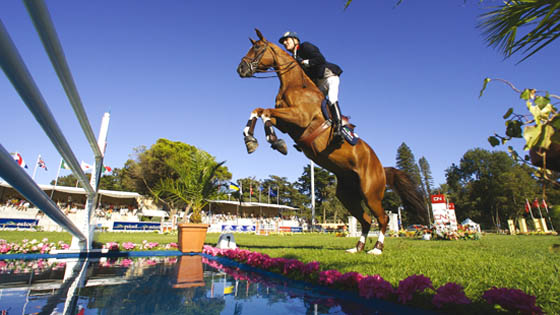Flexing and stretching over a jumping line

An excellent gymnastic that favours the top line suppleness and the correctness of its motion. This exercise is also a good way to school the horse and rider over liverpools and water-jumps.
An excellent gymnastic that favours the top line suppleness and the correctness of its motion. This exercise is also a good way to school the horse and rider over liverpools and water-jumps.
This grid encourages the horse to flex and stretch his entire body. The double on the way-in encourages the rider to approach the line with a cadenced canter and sets the correct length of striding prior the water jump. Therefore, the horse is ready to cover the length of the water jumper that is next. The distance between the water-jump and the oxer on the way out reinforce the horse stretching motion.
Michel teaches Alice who spends a few days at the yard for a clinic. During this session, Alice rides Undiams, an eight year old gelding who has been trained for the last few weeks by Michel to reach the top level. Alice has, here, an excellent opportunity to discover new sensations with this horse who she rides for the first time.
Michel has set up a line of jumps that includes a water jump, a combination on the way-in and an oxer on the way-out. The horse has to bring together the quickness of his front legs, the stretching of his top-line over a wide obstacle and the pushing power over a high fence on the way-out. The key elements to be successful on this exercise are relaxation, steadiness of the strides, straightness and the rider’s eyes with a wide angle view.
This set-up is also a good way to practise water jumps which can be feared by horses and are causing many faults during a course. It is therefore very wise to work this type of obstacle at home without the added stress of the competition.
Undiams has usually a tendency to speed up in combinations. After jumping the line a few times, it appears that the exercise is profitable for his training. The horse is focused and attentive to each single fence and deconstructs each element of the line.



